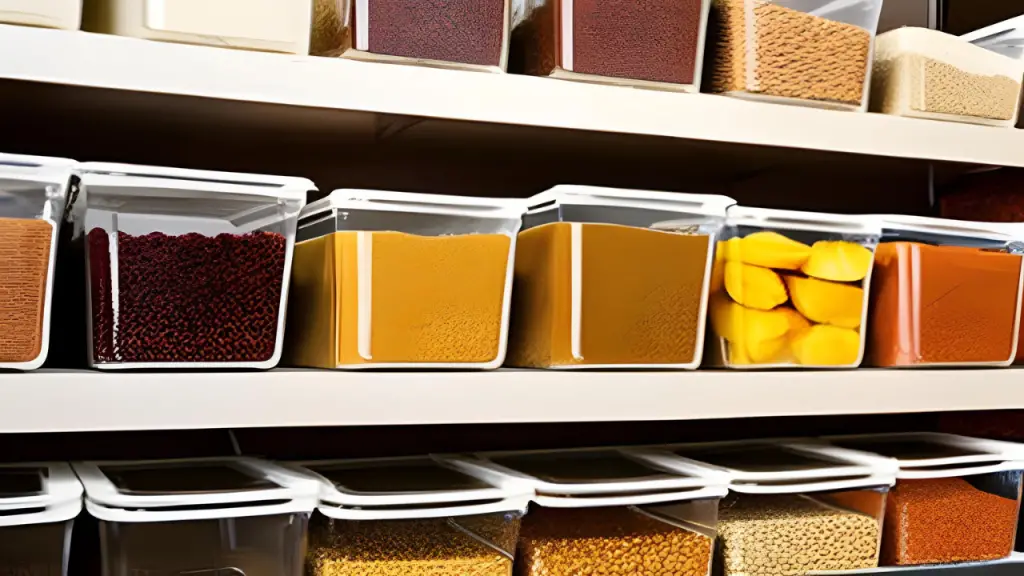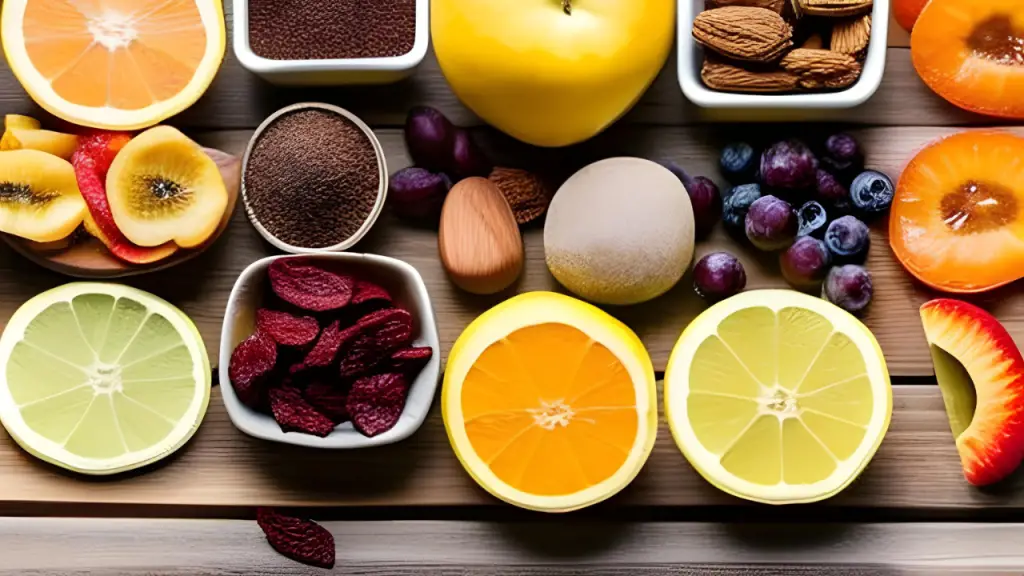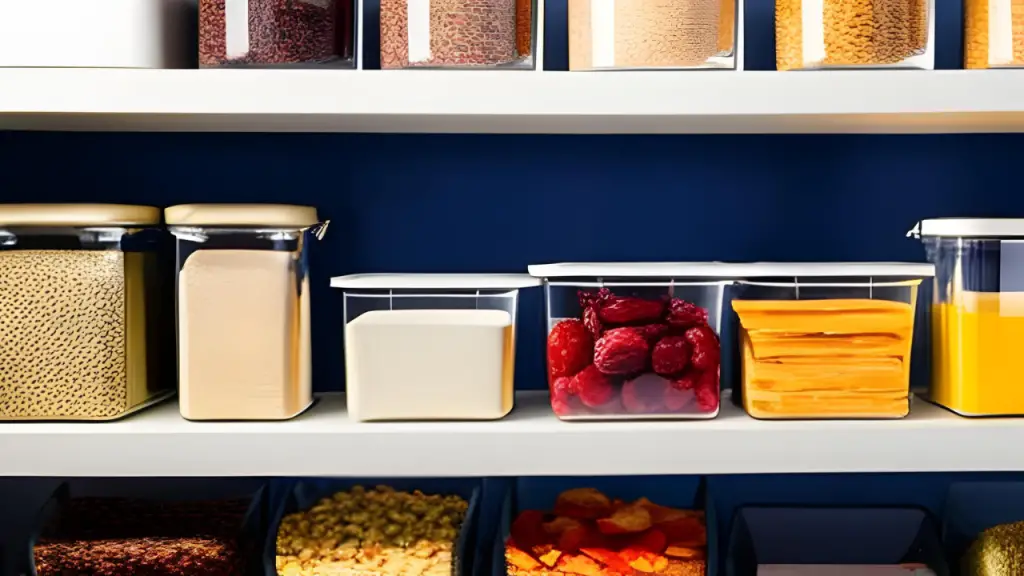Dried fruits are a popular snack choice for many people due to their convenience and long shelf life. However, it’s essential to understand how long dried fruit can last in the pantry to ensure its quality and safety. In this article, we will explore the longevity of dried fruit, factors that affect its shelf life, storage tips, and answer frequently asked questions regarding how long does dried fruit last in the pantry and dried fruit storage. So, let’s dive in and learn more about how long dried fruit lasts in the pantry!
How Long Does Dried Fruit Last in the Pantry?
Dried fruit can last quite a while in the pantry if stored properly. On average, dried fruit can remain fresh for about 6 to 12 months when stored in an airtight container in a cool, dry place.
However, it’s important to note that the actual shelf life may vary depending on several factors, such as the type of fruit, moisture content, packaging, and storage conditions.
Factors Affecting the Shelf Life of Dried Fruit

Various factors can influence the shelf life of dried fruit. Let’s take a closer look at some of the key factors that can affect how long dried fruit lasts in the pantry:
Type of Fruit
Different fruits have different moisture contents, which can impact their shelf life. Some fruits, like raisins and dates, have lower moisture levels and last longer than those with higher moisture content, such as apricots or berries.
Moisture Content
The moisture content of dried fruit plays a significant role in determining its shelf life. Fruits with lower moisture content have a longer shelf life because moisture promotes the growth of bacteria, mold, and yeast, which can lead to spoilage.
Packaging
The packaging of dried fruit is crucial for preserving its freshness. Opt for tightly sealed, airtight containers or resealable bags that prevent air and moisture from entering. This helps to maintain the quality and extend the shelf life of the dried fruit.
Storage Conditions
Proper storage conditions are vital for prolonging the shelf life of dried fruit. Store your dried fruit in a cool, dry place away from direct sunlight and humidity. Exposure to heat, light, and moisture can accelerate the deterioration process and reduce the shelf life of dried fruit.
Storage Tips for Dried Fruit
To maximize the shelf life of dried fruit and keep it fresh for longer, here are some useful storage tips:
- Choose the Right Container: Store dried fruit in airtight containers, glass jars, or resealable bags to prevent moisture and air exposure.
- Keep It Cool: Store dried fruit in a cool pantry or cupboard away from heat sources like stoves or radiators. Cool temperatures help to slow down the degradation process.
- Avoid Moisture: Moisture is the enemy of dried fruit. Ensure the storage area is dry, and avoid storing dried fruit near the sink, dishwasher, or any other source of moisture.
- Shield from Light: Protect dried fruit from direct sunlight by storing it in a dark place or using opaque containers. Light can degrade the quality of the fruit and cause nutrient loss.
- Check Regularly: Periodically check the dried fruit for any signs of spoilage, such as mold, unusual odors, or changes in texture. Discard any dried fruit that appears to be spoiled.
- Rotate Stock: To ensure you consume the dried fruit before it expires, practice the first-in, first-out method. Use older packages of dried fruit before opening new ones.
Shelf Life of Dried Fruit and Nutrition

Dried fruits are popular for their convenience, long shelf life, and sweet flavor. Drying fruit effectively removes water, which helps to prevent spoilage and the growth of microorganisms. Here’s a breakdown of dried fruits’ shelf life and nutritional considerations.
Shelf Life
The shelf life of dried fruits can vary based on several factors, including the type of fruit, the drying process used, and how the fruit is stored.
- Packaged dried fruits: When stored in a cool, dry place and in their original unopened packaging, most commercially packaged dried fruits can last 6 to 12 months. Once opened, it’s best to consume them within a month for optimal freshness, though they can remain edible longer.
- Bulk dried fruits: If you’re purchasing dried fruit in bulk, try to consume it within 4-6 months for the best quality.
- Storage: Keeping dried fruits in an airtight container in a cool, dark place will help extend their shelf life. Refrigeration can further prolong the freshness, especially in warm or humid environments.
- Signs of spoilage: Over time, dried fruits might become overly hard or sticky. Mold growth, off-odors, or sour taste indicate that the fruit has spoiled and should be discarded.
Nutrition
Dried fruits retain many of the nutrients of their fresh counterparts, but there are some changes due to the drying process:
- Caloric Density: Because the water is removed, dried fruits are more calorie-dense than fresh fruits. This means a small serving can have a relatively high number of calories.
- Sugar Content: The natural sugars in fruit become concentrated when dried. Some dried fruits are also sweetened further, so always check labels if sugar intake concerns you.
- Fiber: Dried fruits generally maintain their fiber content, making them a good source of dietary fiber.
- Vitamins & Minerals: While some vitamins, particularly vitamin C, can be reduced or lost during the drying process, many minerals, such as potassium, remain intact. Certain dried fruits, like apricots, are a good source of vitamin A.
- Phytochemicals: Some dried fruits maintain or even have enhanced levels of beneficial compounds called phytochemicals, which can have antioxidant properties.
- Preservatives: Some commercially dried fruits contain added sulfites to preserve color and extend shelf life. If you have a sulfite sensitivity or want a more natural product, opt for unsulfured dried fruits.
Dried fruits are a convenient and long-lasting snack, but it’s important to be mindful of portion sizes due to their caloric density. To enjoy the maximum nutritional benefits, seek out varieties without added sugars or preservatives. Always store them properly to ensure freshness, and regularly check for signs of spoilage.
How Long Will Dehydrated Fruit Last?
Dehydrated fruit is a fruit that the majority of its original water content has been removed. The process of dehydration not only concentrates the flavors but also extends the fruit’s shelf life significantly. The longevity of dehydrated fruits depends on several factors, such as storage conditions, the specific fruit, and the dehydration method.
Storage Conditions:
- Cool and Dry: Dehydrated fruit lasts longer when stored in a cool, dry place. Exposure to heat can cause the fruit to deteriorate faster.
- Airtight: Keeping dehydrated fruit in an airtight container helps prevent moisture from entering, which can lead to mold growth. Vacuum-sealed bags can extend shelf life further.
- Dark: Exposure to light can degrade the quality of the fruit over time, so storing it in a dark place is ideal.
- Specific Fruit: Some fruits have naturally higher sugar or acid content, which can act as preservatives and extend their shelf life. For example, dehydrated apples might last longer than dehydrated bananas.
- Method of Dehydration: The method and thoroughness of dehydration can affect the shelf life. Fruits that have been properly dehydrated until they have a very low moisture content will last longer than those that retain some moisture.
Estimated Shelf Life:
- Room Temperature: When stored in a cool, dry place and airtight containers, dehydrated fruit can last 6 months to a year. Some fruits with higher sugar or acid content might last slightly longer.
- Refrigerated: If you choose to refrigerate your dehydrated fruit, it can extend the shelf life up to a year or even longer, depending on the fruit.
- Freezer: For the longest shelf life, dehydrated fruit can be stored in the freezer, where it can last several years. Ensure the fruit is in a container or bag that’s both airtight and freezer-safe to prevent freezer burn.
Signs of Spoilage:
- Look for color changes, especially if the fruit becomes darker.
- Check for any mold growth or off-odors.
- If the fruit becomes unusually hard or changes texture significantly, it might be past its prime.
- Any sour or off-taste is an indicator that the fruit should be discarded.
Dehydrated fruit, when properly prepared and stored, can last a significant amount of time, making it a convenient and long-lasting food item. Always ensure you store it under the right conditions and regularly check for signs of spoilage.
Packaging and Storing Dry Foods

Dry foods, such as grains, beans, pasta, and flour, have a long shelf life, especially when stored correctly. Proper packaging and storage extend their shelf life and maintain their quality and nutritional value. Here’s a guide to packaging and storing dry foods:
Packaging
- Plastic Bags: While commonly used, they are often not the best choice for long-term storage because they allow air and moisture to get in. However, if used, opt for heavy-duty, food-grade plastic bags.
- Glass Jars: Provide an airtight seal, making them excellent for storing dry foods. They also allow you to see the contents and check for any signs of spoilage or infestation.
- Food-Grade Buckets: These are great for bulk storage. Make sure they come with tight-fitting lids. For extra protection, you can place a large food-grade plastic bag inside the bucket before adding the food.
- Mylar Bags: These bags block light, moisture, and oxygen, making them ideal for long-term storage. They are often used with oxygen absorber packets to remove residual oxygen.
- Vacuum Sealing: This removes air from the packaging and can prolong the life of dry foods. It’s ideal for foods like beans, pasta, and grains.
Storage
- Cool and Dry: Dry foods should be stored in a cool, dry place. Heat can degrade food quality and can increase the risk of spoilage.
- Dark: Exposure to light can degrade dry foods’ quality and nutritional value over time. A pantry, cabinet, or cellar that doesn’t get direct sunlight is ideal.
- Off the Floor: Always store food items off the ground. This reduces the risk of moisture damage and keeps them away from pests.
- Rotation: Use a first-in, first-out system. When you add new items, move the older ones to the front so they get used up first.
- Label and Date: Label all foods with their contents and the storage date. This helps track the age of your stored items and ensures proper rotation.
Considerations for Long-Term Storage
- Oxygen Absorbers: These are used to remove oxygen from the air inside the storage container, extending the shelf life of dry foods and preventing spoilage.
- Desiccants: These are moisture absorbers. They help to ensure that the environment inside your storage container remains dry.
- Pest Control: Before storing, ensure your dry foods are pests-free. You can freeze grains and flours for 48 hours to kill any pests. Always inspect the food and the storage area regularly for signs of infestations.
Proper packaging and storage are key to maintaining the freshness, quality, and longevity of dry foods. Investing in the right materials and adhering to best practices can save money in the long run by reducing waste and ensuring that your food remains safe.
FAQs
Can I extend the shelf life of dried fruit?
Yes, you can extend the shelf life of dried fruit by storing it in the refrigerator or freezer. However, it’s important to note that freezing dried fruit may affect its texture. Consider freezing only the amount you won’t consume within the recommended shelf life.
How can I tell if dried fruit has gone bad?
If dried fruit exhibits signs of mold, an off smell, or a change in color or texture, it has likely gone bad and should be discarded. Consuming spoiled dried fruit can lead to foodborne illnesses.
Are there any health risks associated with consuming expired dried fruit?
Eating expired dried fruit may increase the risk of foodborne illnesses. Always check the quality and freshness of dried fruit before consuming it, especially if it has been stored for an extended period.
Can I store different types of dried fruit together?
It is generally safe to store different types of dried fruit together if they have similar moisture content and storage requirements. However, be mindful of strong flavors that could transfer between fruits.
Can I store opened packages of dried fruit in their original packaging?
If the original packaging is resealable and airtight, you can store opened packages of dried fruit. Otherwise, transfer the dried fruit to an airtight container to maintain its freshness.
Can I rehydrate dried fruit if it becomes too dry?
Yes, you can rehydrate dried fruit by soaking it in water or fruit juice. This process helps restore moisture and makes the fruit plump and juicy again.
Conclusion
Knowing how long dried fruit lasts in the pantry is essential for maintaining its quality and ensuring food safety. By considering factors like the type of fruit, moisture content, packaging, and storage conditions, you can extend the shelf life of dried fruit and enjoy its deliciousness for an extended period. Remember to follow the storage tips provided and regularly check for any signs of spoilage. With proper storage, you can savor the goodness of dried fruit whenever you desire!

